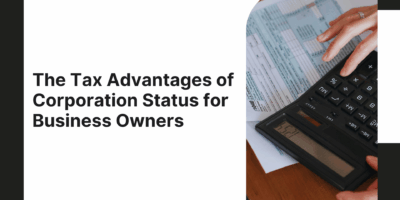
The State of Senior Care: Infographic
Explore recent senior care statistics to reveal how important it is to provide elder care benefits as part of an employee benefits package.


CFA, Chief Executive Officer of BlueSky Wealth Advisors

Managing Director at KIS Finance

CFP, President of Croak Capital

Co-founder & CEO of Coins Value
Whispers of a recession, market crashes, and seemingly endless layoffs have all contributed to a prolonged period of financial chaos for employers and employees alike.
Navigating today’s unpredictable economic environment means financial hardships can strike anyone unexpectedly.
So, what can you do as an employer to help your team stay afloat and, at the same time, strengthen your entire company?
Perhaps one of the simplest yet highly efficient solutions is to offer emergency savings accounts (ESAs).
This article explores how employers can effectively introduce emergency savings accounts to their teams, providing a financial buffer in an increasingly uncertain economic landscape.
Would you be able to withstand a sudden $400 expense?
For nearly 40% of Americans, the answer is no—they would struggle to manage such a sudden cost.
Accidents, illnesses, natural disasters, job loss, and divorce can wreak financial havoc, often when we least expect them.
While most workers can set aside money in a personal savings account, various barriers often prevent them.
However, having an emergency savings account is one solution to this problem.
So, what is an emergency savings account?
An emergency savings account (ESA) is a dedicated fund that helps workers save money for unexpected expenses.
These accounts are typically funded through automatic payroll deductions, making it easy for employees to build their savings over time without much thought.
What sets employer-sponsored ESAs apart is the potential for employer contributions or matches, similar to how some retirement plans work.

The question is, how much should you have in an emergency savings account?
The ideal amount largely depends on your job security and financial situation.
If you have a stable job, such as a tenured university professor, a cash reserve of 3 months’ worth of expenses may be ample.
However, if you work in a field with high layoffs or are self-employed, you may want to save up over a year’s worth of expenses.
For most people, saving up six months of living expenses is generally considered adequate.To put this into perspective, research from the JP Morgan Chase Institute indicates that even the lowest-income households need at least $2,500 to manage typical income and expense fluctuations.
However, 65% of families lack this crucial financial buffer.
Given these challenges, there is growing recognition of the importance of emergency savings for overall financial health.
The lack of emergency savings among Americans has been an issue for years.
Whenever employees lack sufficient savings, they often have no choice but to tap into their retirement funds prematurely and, as a result, incur taxes and penalties.
So, while “hardship” withdrawals from retirement savings can provide temporary relief, they harm long-term financial stability and retirement planning.
In response to this issue, lawmakers enacted the SECURE 2.0 Act, which allows employers to offer “pension-linked” emergency savings accounts (PLESAs) within specific retirement plans.
These accounts are treated as Roth accounts, meaning contributions are taxed upfront, but withdrawals are tax-free.
Non-highly compensated employees can contribute up to $2,500, automatically deducted from their paychecks.
But even before the new retirement savings rules took effect, many forward-thinking companies had already offered their employees a new way to save by partnering with emergency savings providers.
These new accounts are called “out-of-plan” ESAs, and they’re designed to be more flexible and easier to use than traditional retirement savings plans.

Introducing an ESA program can be a strategic move that supports employees and strengthens the organization’s health.
A leaky roof, a car repair, even a medical emergency – these things happen, and they shouldn’t derail an employee’s financial well-being.
Unfortunately, financial stress is a significant problem for many Americans.
The American Psychological Association constantly ranks money as a top stressor, and it can seriously impact employee well-being.
Additionally, the increasing popularity of buy now, pay later options, as seen in these buy now pay later statistics, further shows the financial pressures many workers face, often leading them to defer essential expenses or accumulate debt.
The effect is evident in the workplace, too, as studies show a clear link between financial stress and employee performance.
When employees are stressed about money, they’re more likely to:
Financial stress is also a major reason why employees leave their jobs.
A survey by SoFi at Work found that 20% of financially stressed workers plan to leave for a better-paying position. Employee financial stress is not only disruptive, but it also costs your company money in recruitment and training.
While the demand for financial security has grown, employers’ adoption of emergency savings accounts remains notably low, with only 2% currently offering this benefit.
By offering an ESA program, you’re sending a clear message: you care about your employees’ well-being.

Unfortunately, employers often overestimate the financial well-being of their employees.
A significant gap exists between the perception of company leaders and the reality of their employees’ financial situations.
A recent study found that while leaders estimated that 30% of their employees had an “excellent” financial situation, only 12% of employees themselves agreed with this assessment.
As expert David Blain, Chief Executive Officer of BlueSky Wealth Advisors, shares, “An emergency fund gave me peace of mind after an unexpected medical event. Having that cushion allowed me to focus on recovery rather than finances during a difficult time. Giving employees this reassurance and stability is invaluable.“
Blain’s personal experience on the importance of financial security will resonate with many.
Providing access to emergency savings accounts shows that companies understand employees’ financial pressures and want to help alleviate them.




Understanding and addressing employee financial well-being requires a nuanced approach.
Finances are deeply personal and vary widely from person to person.
Thus, employers must consider the diverse needs of their workforce and offer support that will resonate with a broad range of employees.
The first step is to assess the financial needs of your workforce through surveys, focus groups, or financial wellness assessments.
Next, it’s crucial to select a reputable emergency savings provider for your program.
Research different options and consider fees, investment options, and integration with your payroll system.
Once you’ve chosen a provider, it’s crucial to effectively communicate the benefits of the ESA program to your employees.
Finally, to ensure the program’s success, provide ongoing support to your employees. That could be financial coaching, early earned wage access, or dedicated workshops.
To gain more insights into effective ESA implementation, we turned to industry experts who offered us their insider knowledge. Below are some of the most common themes that emerged when discussing best practices.
Years of experience with 401(k) providers have demonstrated the power of automatic enrollment in retirement savings.
As Holly Andrews, Managing Director at KIS Finance, explains, “One of the best strategies is automatic enrollment. Basically, you can automatically direct a small part of an employee’s salary into an emergency savings account. This approach makes saving seem effortless.“
For many employees, the default automatic enrollment option is the most effective way to encourage participation.
Eric Croak, CFP, President of Croak Capital, also emphasizes the importance of consistent savings: “Whether it’s manually done each month or set up through a financial institution, income should be routinely moved into designated savings accounts—ideally automatically.”
While the initial cost to the employer can seem daunting, the long-term benefits of ESAs often outweigh the costs.
As Holly Andrews notes, “Starting with a modest match and gradually increasing it can make the program more manageable.”
By easing employer contributions, companies can gradually build up the program without an immediate financial impact.
Over time, the positive effects on employee morale, productivity, and retention can far outweigh the initial costs.

A well-informed workforce is more likely to take advantage of emergency savings accounts. Education is key to helping employees understand the importance of saving and how an ESA can benefit them.
Holly Andrews emphasizes the importance of providing resources to help employees develop financial skills by saying, “Staff members can take part in workshops, use online tools, or even get one-on-one financial advice to learn about emergency fund worth and fundamental saving habits.”
Eric Croak suggests a similar approach: “Inviting a financial advisor to speak at your workplace or hosting a webinar can empower your employees to improve their money management skills.”
These educational opportunities can help dispel myths about saving and provide practical budgeting and goal-setting advice.
The effectiveness of emergency savings accounts is evident in numerous case studies.
One such example comes from UPS. They partnered with major financial services providers and integrated an ESA program into their 401(k) plan.
The initiative had a significant impact, particularly for employees with lower incomes.
In just one year, the program resulted in $10 million in new savings and a 39% increase in participation.
To further incentivize saving, many companies offer additional benefits.
For instance, Delta Air Lines provides financial education programs and matches employee contributions up to $1,000. Workers at Starbucks can also contribute a portion of their after-tax pay to a savings account, and Starbucks will match those contributions up to $250.
As Chris Yang, Co-founder & CEO of Coins Value, explains, “Matched funds into emergency savings accounts are a game-changer for employers. By providing incentives, we’ve seen a remarkable increase in participation and savings rates.”
Yang shares a similar example: “This was clearly seen in a case study whereby, upon implementing this strategy in a middle-sized tech firm just recently, we recorded a shocking 78% increase in employee participation in emergency fund savings after just six months.”
Emergency savings accounts are a tangible benefit that directly addresses the financial concerns of their workforce. As we’ve already discussed, employers benefit greatly from offering ESAs.
ESAs provide employees with a financial safety net, helping them weather unexpected life events without falling into debt.
In summary, emergency savings accounts are a win-win solution for employees and employers.
Here are additional resources that might be helpful: a calculator that assists employees in determining how much they should save in an emergency fund based on their monthly expenses and other financial factors.
Although not specifically for emergency savings, this budget planner can help workers understand their financial picture and identify how much they can set aside for emergencies.
Disclosure: Some of the products featured in this blog post may come from our partners who compensate us. This might influence the selection of products we feature and their placement and presentation on the page. However, it does not impact our evaluations; our opinions are our own. The information provided in this post is for general informational purposes only and should not be considered as legal, tax, accounting, or investment advice. For advice on specific issues, please consult with a qualified professional.
Senior Content Writer at Shortlister
Browse our curated list of vendors to find the best solution for your needs.
Subscribe to our newsletter for the latest trends, expert tips, and workplace insights!

Explore recent senior care statistics to reveal how important it is to provide elder care benefits as part of an employee benefits package.

What if your biggest tax lever isn’t a deduction but your legal structure?

Your SaaS company doesn’t need a physical office abroad to trigger a multimillion-dollar tax bill. With authorities expanding the definition of permanent establishment, unprepared employers often realize the risk too late.

Could stock options be the decision that transforms your career into a life-changing investment opportunity?
Used by most of the top employee benefits consultants in the US, Shortlister is where you can find, research and select HR and benefits vendors for your clients.
Shortlister helps you reach your ideal prospects. Claim your free account to control your message and receive employer, consultant and health plan leads.